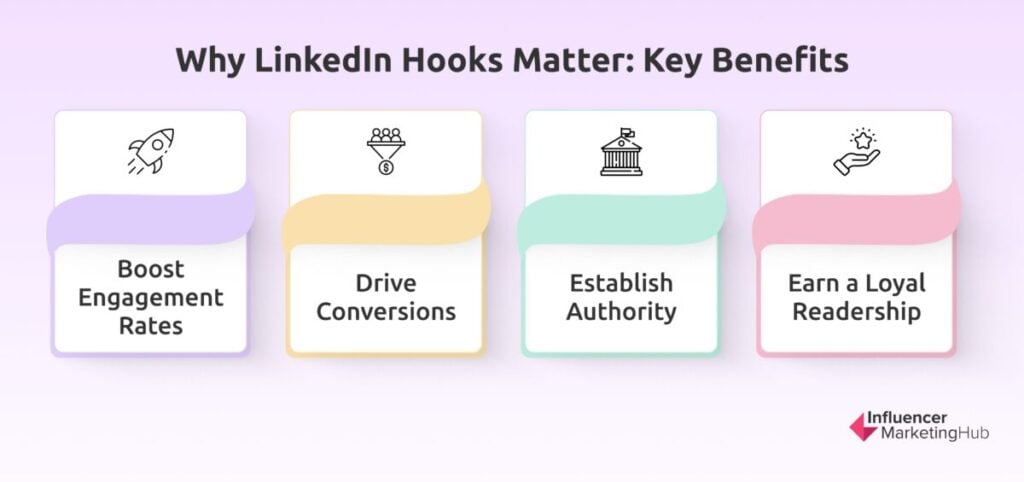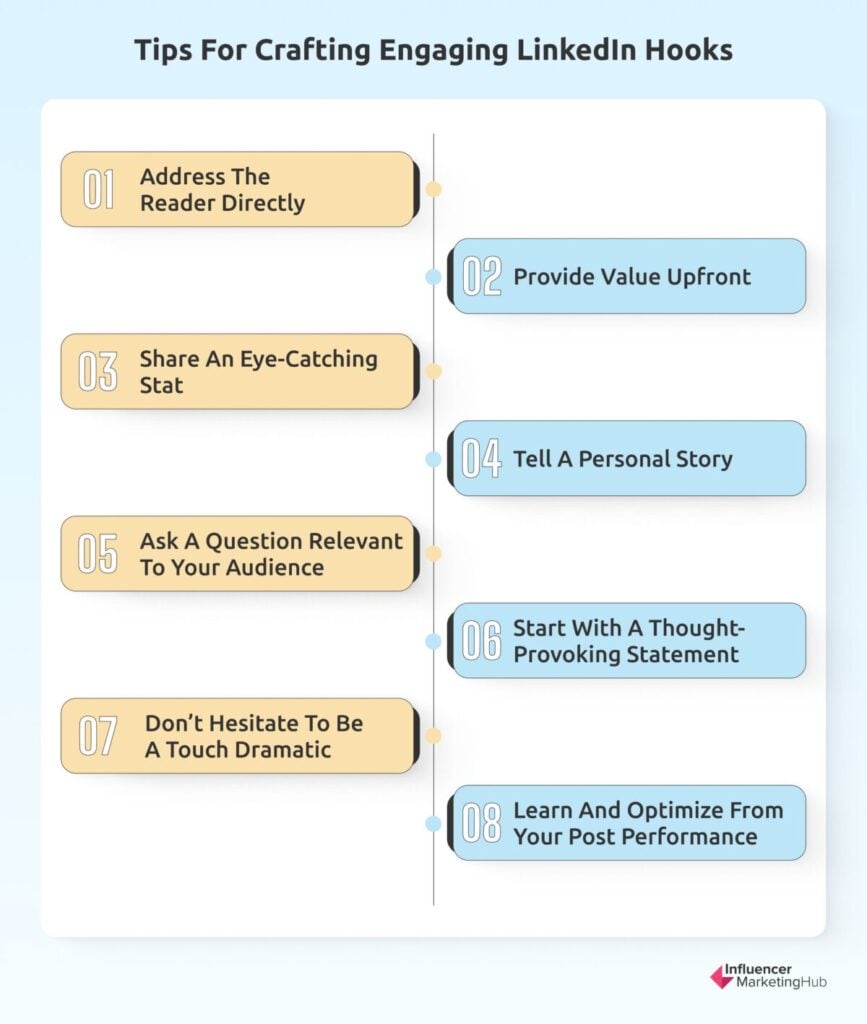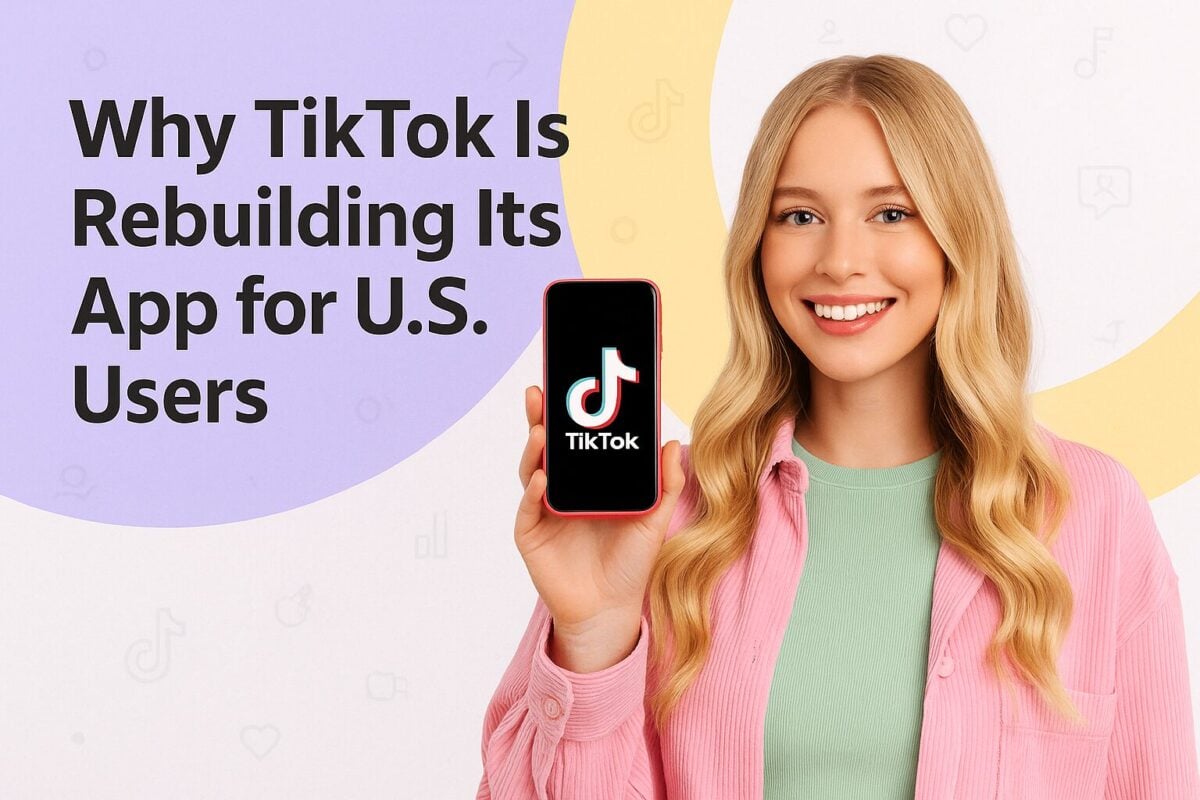Have you ever scrolled through LinkedIn and found a post that immediately grabbed your attention? It piqued your curiosity, compelling you to click the "see more" button to read the rest.
With LinkedIn's massive user base spanning almost a billion professionals across over 200 countries, standing out is more challenging than ever. If you're aiming for LinkedIn success, mastering the art of a compelling hook is crucial. But crafting posts that truly engage such a diverse and extensive audience isn't easy, and you might be struggling to capture their attention.
So how do you create LinkedIn hooks that make your audience stop and listen? And why are these hooks so vital in the first place? Find out the answers in this guide.
Use Influencer Marketing Hub's LinkedIn AI Post Generator
We chose to build a tool that automatically produces the perfect post, with little input from your side. Utilizing Artificial Intelligence, we examined the most popular LinkedIn posts that had enjoyed widespread success on the website in order to optimize our generator for creating the ideal viral post. We found that on LinkedIn, the most popular posts often contain components such as excessive line spacing, banal advice and vivid stories of triumph or adversity. Now, you can make your own excellent LinkedIn post with the help of AI - and provide greater detail and complexity!
I ate the spiciest pepper in the world and it was incredibly painful. My mouth was on fire and I had to drink a lot of water to try to put out the fire. I would not recommend doing this unless you are prepared for the pain.
Fortune favours the bold 
I’m feeling lucky today!
What is a Hook in a LinkedIn Post?
In a LinkedIn post, a hook refers to a word or phrase in the first few lines of your post that’s intended to spark the audience’s interest. In other words, it’s the part of your post that instantly grabs attention and makes readers want to keep reading. This can be especially helpful when you’re sharing a longer LinkedIn post that may be broken up by a “see more” button.
Essentially, it’s the part of your post that’s intended to get people to finish reading the post. It can be woven into your post headline or it can be a part of the post content itself. See the following example from Warner Bros. Games.
Why You Need an Effective LinkedIn Hook
So what’s the big deal about LinkedIn hooks? Why do you need to include them in your post anyway? Here are some of the main ways in which you can benefit from writing effective LinkedIn hooks:
Boost Engagement Rates
Someone who spent two minutes reading your post is much more likely to share their thoughts in the comment than someone who quickly scrolled past it. When readers are instantly hooked to your post, there’s a better chance that they’ll read the whole thing. That means they’re going to spend more time with your post, which makes them much more likely to engage with it. Whether this involves liking and commenting on the post or even sharing it with their followers, adding an interesting hook can significantly improve your engagement rates.
Drive Conversions
Sometimes, you’re marketing on LinkedIn to drive some type of conversion action. Perhaps you want people to click on your link, download your latest report, or sign up for something. Regardless of the specifics, having a clear hook at the start is an excellent way to improve your chances of converting people.
After all, someone who only glanced past your post isn’t very likely to sign up for your webinar. Instead, if your hook was convincing enough to spark their interest, they may spend some time reading the whole post to see what value you have to offer. This would then make them much more likely to take that conversion action.
Establish Authority
One of the main reasons why brands and creators have a LinkedIn content marketing strategy is to establish authority in their respective niches. It’s not just about creating awareness but also about proving to others that you have expertise, and that you know what you’re doing. But this can be challenging when people won’t even stop to read what you have to say.
That’s where your LinkedIn hooks come in, helping you capture that initial interest that would get people to read your expert insights and opinions. As such, using effective hooks consistently will eventually help you to establish authority in your intended niche or industry.
Earn a Loyal Readership
Once people start to see your expertise, they may be inclined to tune in regularly to your LinkedIn posts. This most likely wouldn’t have happened if you weren’t capable of drawing in those readers through your hooks. In other words, you could end up building a loyal readership when you create effective hooks for your posts.
Effective LinkedIn hooks are essential for boosting engagement, as they encourage readers to spend more time on your posts and interact with them. They also drive conversions by compelling readers to take action, help establish your authority in your niche, and build a loyal readership that consistently engages with your content.
8 Tips and Best Practices to Create the Perfect Hook for Your LinkedIn Posts
Now that you clearly understand how much value your LinkedIn hooks can provide, it’s time to find out how to create them. This can prove to be much more challenging than you’d anticipate, especially if you’re new to it. Follow the tips and best practices below on writing intriguing hooks for your LinkedIn posts.
1. Address the Reader Directly
Speaking to the reader directly is the best way to ensure that you get their attention. This makes the post feel personalized like it was written specifically for them. As such, it can pique their interest and make them want to pay attention to the rest of the post.
Using second-person pronouns like “you,” “you’re,” and “your” is the simplest way to keep your hook more focused on the reader. Additionally, you could try to make it more relevant to them by bringing up common pain points and experiences.
See how Canva combines both of these tips by using second-person pronouns to address the readers and bringing up a common pain point about navigating the job market. They then follow up with an invitation to join the team on a live webinar and Q&A session that could offer great value to readers experiencing said pain point.
2. Provide Value Upfront
What are people getting out of the post? What lesson are they going to learn? Make this apparent right from the beginning so they have a reason to keep reading the rest of your post. You can then expand on this by adding context further below, which people will read once they’re already hooked to your post.
For example, in the following post, Moosend immediately hooks readers in by talking about the value i.e., the ability to build beautiful and converting email campaigns on a reasonable budget. This can immediately pique the interest of readers who may be looking to improve their email campaigns, compelling them to hit the “see more” button to read the rest of the post.
3. Share an Interesting/Eye-Catching Stat
Numbers talk, especially when it comes to a platform like LinkedIn. With LinkedIn being a platform filled with professionals, facts and figures tend to catch the eye and give your post more credibility. Moreover, numbers are more likely to stand out from blocks of text, which means people are more likely to take notice of your post as it shows up in their feeds.
Include interesting stats and eye-catching numbers that your audience is likely to pay attention to. For instance, the following LinkedIn influencer decided to include some numbers about how much their one-person business made in January.
However, the stats don’t necessarily have to come from your first-party data. Instead, you could cite new and interesting stats relevant to your industry. Or you could include some numbers that can be tied to the topic of your post. Regardless of what data you choose to include, it should ideally be interesting or shocking enough to get people to take notice.
For instance, ClearVoice attempts to promote their freelancing solutions by citing an interesting stat from DemandSage. The post highlights how there are plenty of freelancers across different time zones so business owners don’t have to do it all on their own and keep their business running both day and night.
4. Tell a Personal Story that Resonates with the Audience
Good storytelling can make an emotional impact. Even when it comes to LinkedIn, starting your post with a good personal story that resonates with the audience can be the perfect way to hook your readers. This is particularly effective for individuals and influencers looking to grow their personal brand on LinkedIn.
When you show your personal side, you’re showing your vulnerability. This is the key to strengthening your connection with the audience and enticing them to engage with your post. They may feel intrigued to read the rest of your story so they can follow your journey.
5. Ask a Question Relevant to Your Audience
One of the most popular approaches to writing a LinkedIn hook is by asking a question. Brands and creators often lead their posts by asking a thought-provoking question that’s relevant to their audience. It may be a question related to a common pain point they’re experiencing, a solution they’re looking for, or an experience that’s shared by many in the industry.
When people see a post asking a question that’s relevant to them, they can instantly tell that the post offers the information they need or want. As such, they may be more interested to see what the rest of the post is saying.
For instance, the following Search Engine Journal post asks an interesting question about whether the reader is curious to know how brands like Google have always been successful with their marketing campaigns. It then follows up with a way for readers to get the answers they need, helping to push the company’s Global Marketing Day event.
6. Start with a Thought-Provoking Statement
Sometimes, your hook can be just as thought-provoking even without asking a question. The answer lies in an interesting statement that gets people to think (or look) twice. It could be something shocking, innovative, or downright controversial…as long as you’re going to provide relevant context further below.
The key to making this type of hook work is by ensuring that the statement isn’t generic. The whole point is to make people stop and think. So it needs to be very new, very different, and very interesting compared to the rest of the posts that people are seeing in their feeds.
Intuit Mailchimp starts off their post with a statement about AI officially entering the chat. They go on to say that no, it’s not taking the jobs of marketers. In the next paragraph, they start to explain their stance, enticing people to click on the “see more” button to understand their reasoning behind this statement.
7. Don’t Hesitate to Be a Touch Dramatic
It pays off to add a touch of drama to your LinkedIn hooks. Since the goal is to get people to pause and pay closer attention, being a little dramatic can often do the trick because it catches the eye. Whether this involves celebrating an achievement, sharing a personal experience, or making an announcement, a little hyperbole goes a long way in hooking your readers to your post.
For instance, Slack went so far as to add a little twist to the classic Christmas poem “A Visit from St. Nicholas.” The company turned it into a sweet little poem relevant to their audience and used it to wish their followers happy holidays.
8. Learn and Optimize from Your Post Performance
How do you know if your LinkedIn hooks are actually working? While the above tips may provide you with some inspiration, it may be difficult to put them into practice. Plus, you don’t even know what types of hooks work best on your audience. Since every brand’s audience is different, this makes it crucial to look at your post performance to understand which hooks resonate with your audience.
Once you use the above tips to write a few hooks, make the most of your LinkedIn analytics to see which ones were able to drive the most engagement. Based on this data, you can compare what your top-performing hooks have in common and then use those insights to write even more effective hooks in the future.
For example, you might find that in most of your top-engaging posts, your hooks have asked a question. So you’d want to apply the same formula and create more LinkedIn posts with hooks asking a question.
Get Ready to Hook Your Readers
Mastering the art of crafting effective LinkedIn hooks is crucial for enhancing your engagement, driving conversions, and establishing authority on the platform. By implementing the tips and best practices outlined in this guide, you can create hooks that captivate your audience and keep them coming back for more. Remember, the key to success lies in continuous learning and optimization—use LinkedIn analytics to assess which hooks resonate most with your audience, and refine your approach accordingly. With practice and persistence, your LinkedIn posts can go from zero to hero, making a lasting impact in your professional community.
Frequently Asked Questions
What is a LinkedIn hook?
A LinkedIn hook is a word or phrase in the first few lines of your LinkedIn post that’s intended to spark the reader’s interest.
What is an example of a hook headline?
An example of a hook headline is something along the lines of – “5 Marketing Secrets You Didn’t Know You Needed.”
What are the five types of hooks?
Statistic hook, question hook, statement hook, anecdotal hook, and quotation hook are the five types of hooks.
Can I customize hooks generated by online tools?
Yes, most online hook generators allow you to customize the suggested hooks to better fit your style and message. You can adjust the tone, add specific details, or combine elements from different hooks to create a unique and engaging opening for your post.
How can I measure the effectiveness of my LinkedIn hooks?
You can measure the effectiveness of your hooks by tracking engagement metrics such as likes, comments, shares, and click-through rates on your posts. Analyzing these metrics will help you understand which hooks resonate most with your audience and inform your future content strategies.




